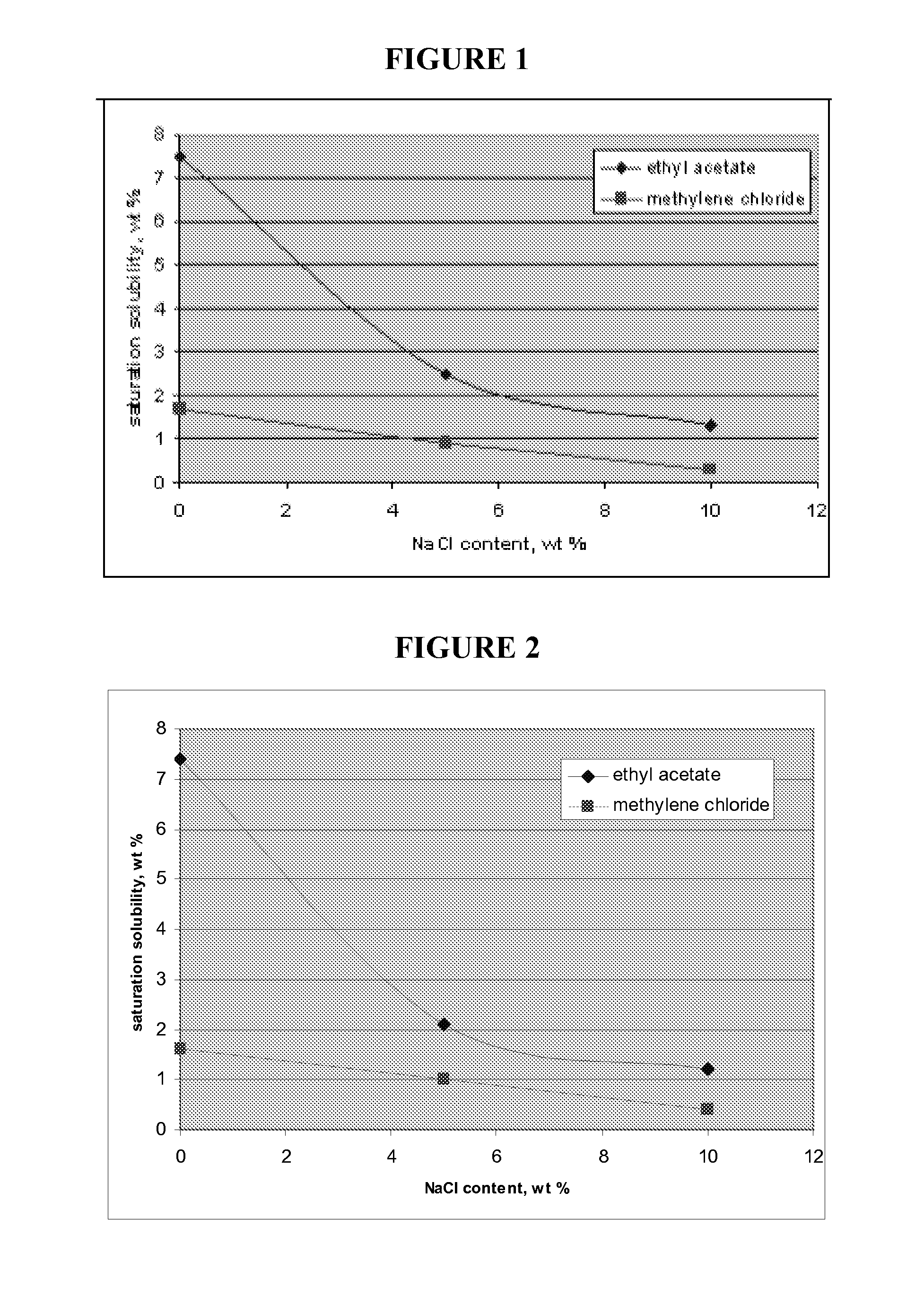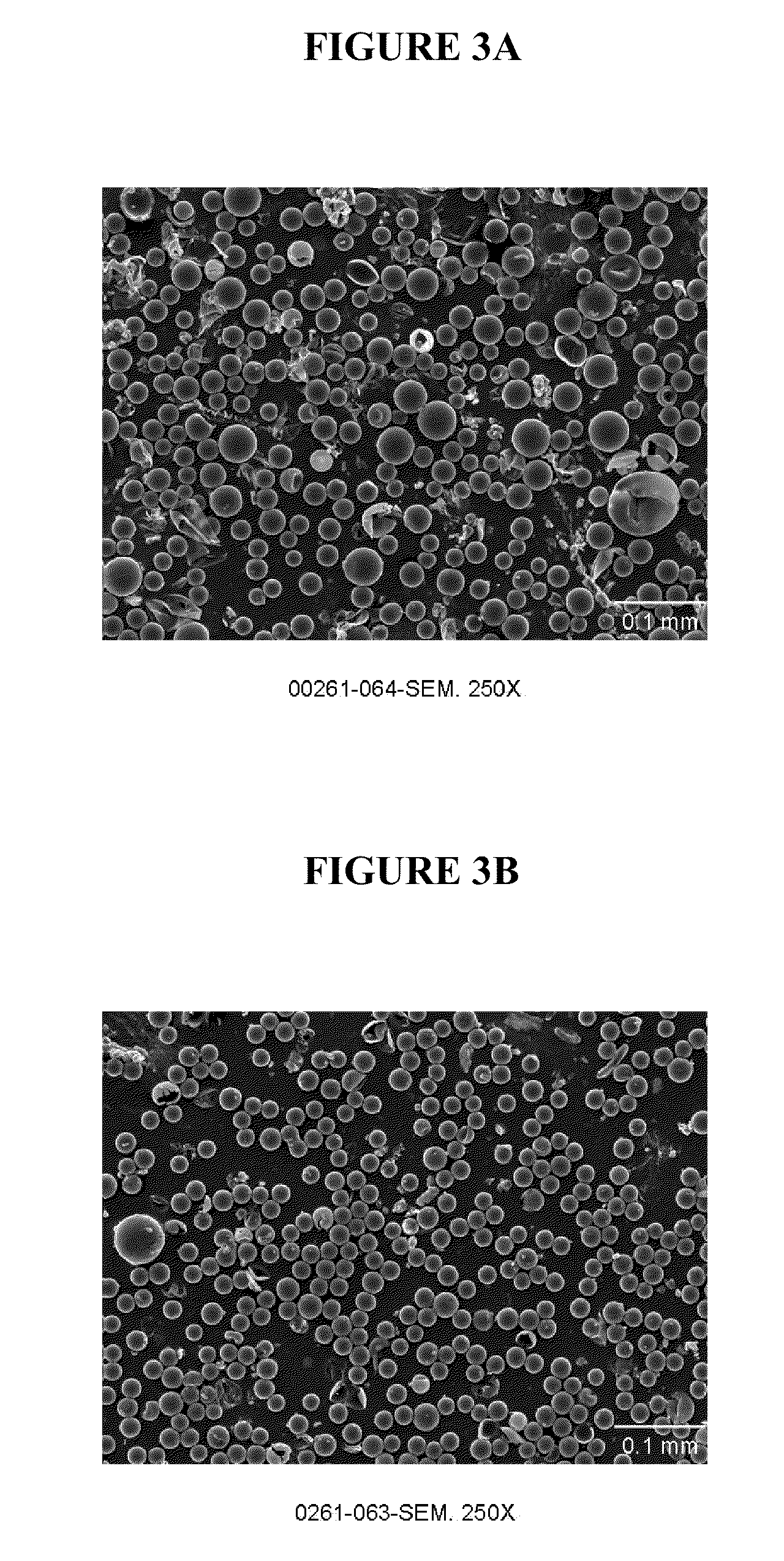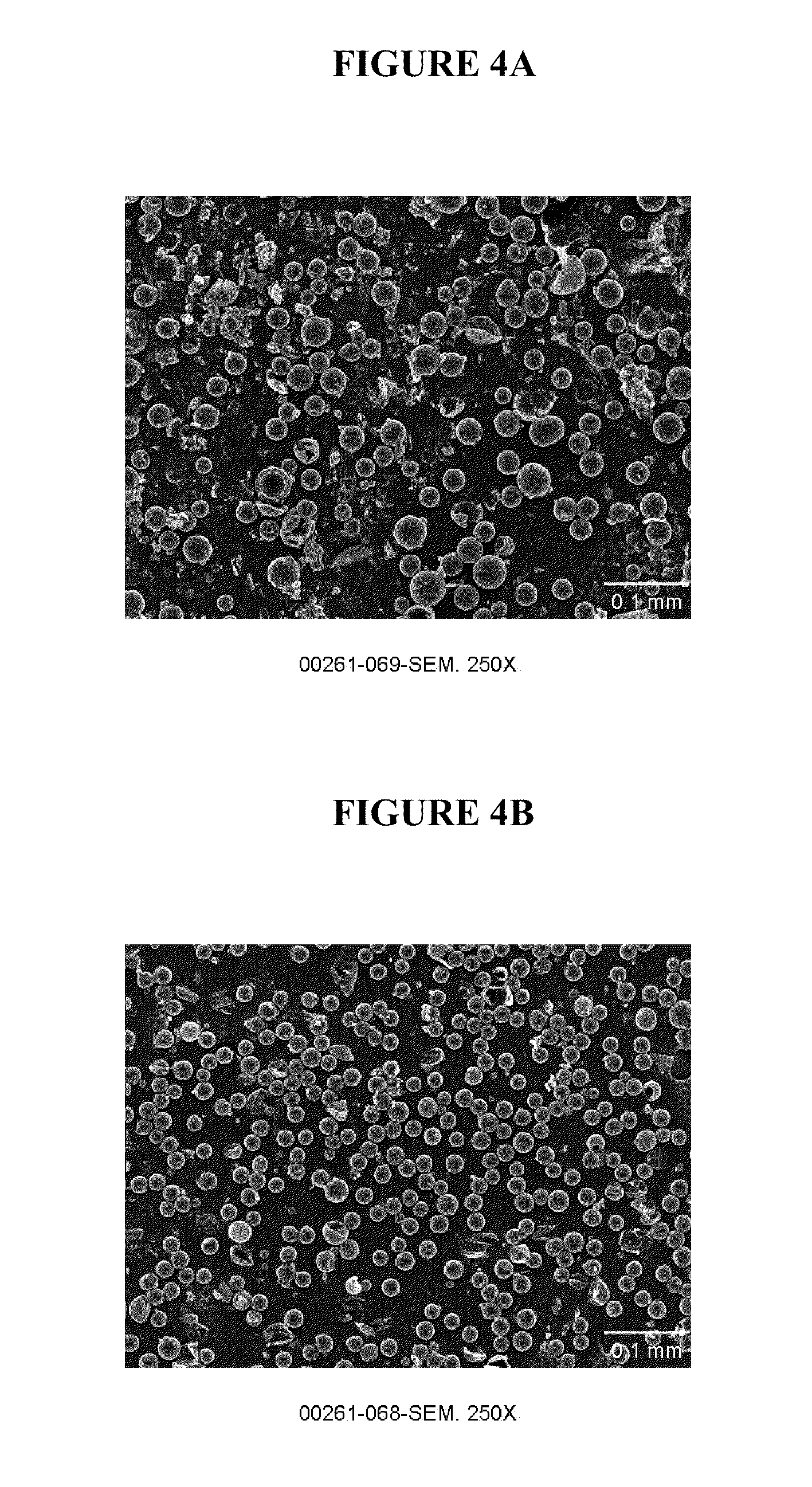Microencapsulation process with solvent and salt
a microencapsulation and solvent technology, applied in the field of microencapsulation processes, can solve problems such as processing challenges, and achieve the effects of reducing the solubility of the first and second solvents, reducing the solubility of the solvent in the continuous process medium, and facilitating the processing
- Summary
- Abstract
- Description
- Claims
- Application Information
AI Technical Summary
Benefits of technology
Problems solved by technology
Method used
Image
Examples
example 1
[0052]An equilibrium / saturation study was performed to measure solvent solubilities in PVA solutions in increasing salt concentration levels. The saturation solubility in weight % of ethyl acetate and methylene chloride were individually tested with varying sodium chloride weight % in a 2% PVA aqueous solution. As can be seen from FIG. 1, as the sodium chloride content was increased, the saturation solubility of the two organic compounds decreased. At about 15 weight % sodium chloride contention, the PVA began to salt out of the solution. Similar trends are observed using a 1% PVA aqueous solution as is shown in FIG. 2.
example 2
[0053]Microparticle formulations were made with a continuous phase (CP) system containing high salt concentration (2M) both with and without added organic solvent in the CP system. Formulations were made by first emulsifying either 150 microliters or 300 microliters of an inner aqueous phase solution consisting of 0.1 wt % solution of poly(vinyl alcohol) (PVA) into 1.5 g polymer solution consisting of 25 wt % 50:50 poly(lactide-co-glycolide) (0.3 dL / g) (5050 PLG 3E) in ethyl acetate. The emulsification of the inner aqueous phase solution into the polymer solution was performed for 60 seconds with a Polytron PT10-35 mixer using a speed setting of 3. The resulting primary emulsion was used as the dispersed phase (DP) solution, which was emulsified into 50-g continuous phase (CP) solution consisting of 1 wt % PVA and 2M sodium chloride and, optionally, 3 wt % ethyl acetate. Emulsification of the DP into the CP was performed by slowly introducing the DP solution to the mixer head of an ...
example 3
[0056]Angle of repose is a technique used to characterize the flowability of solids such as powders. Improving the flowability of a powder is advantageous by providing better handling during powder filling and packaging operations, lower losses of material during transfer, and reduced aggregation. The U.S. Pharmacopeia (USP) General Chapter “Powder Flow” (reference: USP32 / NF27) (2009) refers to four general methods that are commonly employed to characterize and compare powder flow characteristics, one of which is the Angle of Repose (AOR) method. The U.S. Pharmacopeia (USP) General Chapter “Powder Flow” USP32 / NF27 (2009) is incorporated herein by this reference for its teachings of AOR measurements. The USP describes basic methods for assessing the AOR and identifies two important experimental variables that should be defined in any general method used to determine AOR: (1) funnel height should be specified as being either fixed or varied relative to the base during measurement; and...
PUM
| Property | Measurement | Unit |
|---|---|---|
| angle of repose | aaaaa | aaaaa |
| angle of repose | aaaaa | aaaaa |
| angle of repose | aaaaa | aaaaa |
Abstract
Description
Claims
Application Information
 Login to View More
Login to View More - R&D
- Intellectual Property
- Life Sciences
- Materials
- Tech Scout
- Unparalleled Data Quality
- Higher Quality Content
- 60% Fewer Hallucinations
Browse by: Latest US Patents, China's latest patents, Technical Efficacy Thesaurus, Application Domain, Technology Topic, Popular Technical Reports.
© 2025 PatSnap. All rights reserved.Legal|Privacy policy|Modern Slavery Act Transparency Statement|Sitemap|About US| Contact US: help@patsnap.com



